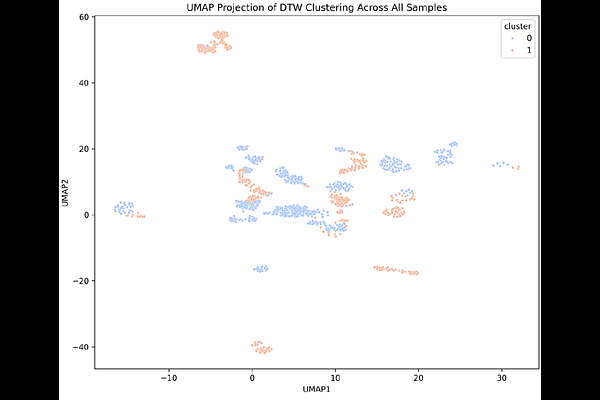Phase-Space Dynamics Reveal Structured and Chaotic Motility in Human Sperm via DTW Clustering

Phase-Space Dynamics Reveal Structured and Chaotic Motility in Human Sperm via DTW Clustering
Sergounioti, A.; Alonaris, E.; Rigas, D.
AbstractBackground: Traditional sperm motility metrics often fail to reflect the dynamic complexity of motion patterns. Here, we present an unsupervised framework combining dynamic time warping (DTW) clustering with phase-space and fatigue-sensitive descriptors to uncover latent motility phenotypes. Methods: We analyzed 1176 sperm tracks from the VISEM dataset using DTW distance matrices applied to velocity time series, followed by agglomerative hierarchical clustering (n = 2). After cluster assignment, we extracted phase-space features: recurrence rate, spectral entropy, fractal index, and Lyapunov approximation. Fatigue metrics such as VSL slope were also computed. Results: DTW clustering revealed two well-separated motility phenotypes with a mean silhouette score of 0.861. Chaotic-like tracks exhibited higher spectral entropy (4.45 vs 2.58), elevated fractal index (0.079 vs 0.434), and increased local instability as reflected by the Lyapunov approximation (0.131 vs 0.009; all p < 0.001). Recurrence rate showed no significant difference. VSL slope was markedly more negative in Chaotic-like tracks, indicating a stronger fatigue component. Conclusions: Our pipeline stratifies sperm motility into biologically interpretable dynamic classes using raw temporal profiles, without relying on predefined scalar indices. This approach may enhance phenotypic analysis in reproductive diagnostics by capturing structural and fatigue-driven variability in sperm motion.